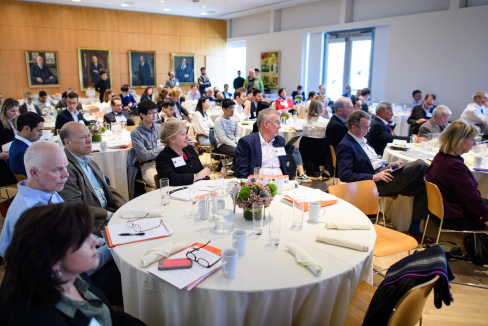Principal Investigator
At a Glance
Carbon dioxide (CO2 ) capture and storage, including at bioenergy conversion facilities, will be crucial if the U.S. is going to reach net-zero emissions by 2050. The Energy Systems Analysis group launched new research in 2021 to explore with high spatial and temporal resolution how these features of the future energy landscape might evolve most expeditiously. The research attempts to understand the potential performance, benefits, costs, and challenges of deploying regional “hubs,” which are clusters of CO2 capture sites linked via pipeline networks to storage injection sites. A deep understanding of such hubs will help inform public and private decision-making to accelerate their deployment. An initial regional focus is the Louisiana Gulf Coast.
Research Highlight
Last year, Princeton’s Net-Zero America (NZA) study (Larson et al., 2021) highlighted the key role that both CO2 capture and storage (CCS) and biomass conversion to clean energy carriers with CO2 capture and storage (BECCS) will need to play for the country to reach net-zero emissions by 2050. A deep-dive research effort was launched in 2021 to explore with high spatial and temporal resolution how these features of a future energy landscape might be evolved most expeditiously. The organizing focus is regional “hubs,” which are clusters of CO2 capture sites linked via pipeline networks to storage injection sites. CCS hubs have been proposed for launching and upscaling a CCS industry (Oil and Gas Climate Initiative, 2022; Abramson et al., 2022; Meckel et al., 2021), including to help mitigate employment losses in the energy transition as fossil fuel industries shrink (Energy Futures Initiative, 2021). However, there has been relatively little detailed public-facing analysis to better understand bottlenecks and roadblocks that development of CCS hubs might encounter and how these might be overcome to accelerate deployment. There has been even less analysis of the challenges for developing CCS hubs that include BECCS facilities. The research is adopting a case-study approach and focusing initially on the Louisiana Gulf Coast region.
Louisiana is an attractive initial case study region. The state has mandated greenhouse gas emission reduction goals, including net-zero by 2050 (Office of the Governor of Louisiana, 2022), and its Climate Action Plan (Louisiana Climate Action Plan, 2022). These plans call for incentivizing industrial CCS hubs. Two-thirds of Louisiana’s 200+ million tonnes per year of emissions are of industrial origin (the U.S. average is 17% [Dismukes, 2021]), and many of the emitting facilities are clustered in the southern part of the state (Figure 1.1). This part of the state is where the subsurface geology is among the most prospective anywhere in the country for long-term underground CO2 storage (Roberts-Ashby et al., 2014). These are favorable conditions for establishing CCS hubs, and some already-published studies (Global CCS Institute, 2020; Dismukes et al., 2019) provide a useful starting point for the Energy Systems Analysis group’s work.

Louisiana industrial CO2 emitters and potential biomass residue availability. Individual facilities with CO2 emissions of 25,000 tonnes per year or more in 2019 are shown (U.S. EPA, 2022). A total of 180 such facilities collectively emitted 121 million metric ton (MMT) in 2019. The distribution of potential future residue-biomass energy feedstocks by parish (county) is also shown. The degree of shading reflects the U.S. DOE (2016) estimate of potential availability of residues of agricultural and forestry operations having roadside costs of $100/tonne or less. Total residue availability is 7 MMT/y (dry weight).
Additionally, Louisiana has significant agricultural and forestry activities that could source biomass feedstocks for future BECCS facilities. There are an estimated seven million tonnes per year of residue biomass potentially available in Louisiana for energy use with no land-use change from today (Figure 1.1). Currently there is also a net annual addition of tree biomass on Louisiana’s extensive forested lands (Office of Forestry, 2020). In 2018 (most recent data) this was about seven million tonnes (U.S. Forest Service, 2020). To put these figures in perspective, the carbon in seven million tonnes of biomass is equivalent to about 13 million tonnes carbon dioxide (tCO2 ).
The research is at an early stage. It includes (1) data collection to characterize and map existing CO2 emission sources, biomass resources, and potential CO2 storage reservoirs; (2) establishment of a biogenic carbon accounting framework, especially for forest-derived biomass; (3) techno-economic assessment of CO2 capture retrofits for a variety of existing process technologies and plant configurations, as well as of future BECCS power, hydrogen, or liquid fuels production; and (4) development and application of methodologies for cost- and risk-optimized design of integrated CCS hubs.
In addition to support from CMI, ExxonMobil, Deloitte, and Weyerhaeuser are all interested in engaging with and cofunding the effort, and these relationships are now being formalized. Methods and modeling tools developed in this initial two-year effort will facilitate future CCS hub analyses for other regions of interest across the U.S., including the Ohio River Valley, the Upper Midwest, and California’s Central Valley, among others.
References
Larson, E., C. Greig, J. Jenkins, et al., 2021. Net-Zero America: Potential Pathways, Infrastructure, and Impacts, Princeton University. (https://doi.org/10.5281/zenodo.6378139).
Oil and Gas Climate Initiative, Kickstarter Hubs, website (accessed Feb. 11, 2022). (https://www.ogci.com/action-and-engagement/removingcarbon-dioxide-ccus/our-kickstarter-hubs/).
Abramson, E., E. Thomley, D. McFarlane, 2022. An Atlas of Carbon and Hydrogen Hubs for United States Decarbonization, Great Plains Institute. (https://scripts.betterenergy.org/ CarbonCaptureReady/GPI_Carbon_and_Hydrogen_Hubs_Atlas. pdf).
Meckel, T.A., A.P. Bump, S.D. Hovorka, and R.H. Trevino, 2021. Carbon capture, utilization, and storage hub development on the Gulf Coast, Greenhouse Gas Science and Technology 11(4):619-632. (https://doi.org/10.1002/ghg.2082).
Energy Futures Initiative and AFL-CIO, Building to Net-Zero: A U.S. policy blueprint for gigaton-scale CO2 transport and storage infrastructure, June 2021, pp. 55-56. (https://energyfuturesinitiative.org/efi-reports).
Office of the Governor of Louisiana, The Climate Initiatives Task Force, website (accessed Feb. 11, 2022). (https://gov. louisiana.gov/page/climate-initiatives-task-force).
Climate Initiatives Task Force, Louisiana Climate Action Plan, February 1, 2022. (https://gov.louisiana.gov/assets/docs/ CCI-Task-force/CAP/Climate_Action_Plan_FINAL_3.pdf).
Dismukes, D.E., 2021. Louisiana 2021 Greenhouse Gas Inventory, Center for Energy Studies, Louisiana State University. (https://www.lsu.edu/ces/publications/2021/ louisiana-2021-greehouse-gas-inventory-df-rev_reduced.pdf).
Roberts-Ashby, T.L., S.T. Brennan, M.L. Buursink, et al., 2014. Gulf Coast, Chapter H of Geologic Framework for the National Assessment of Carbon Dioxide Storage Resources, P.D. Warwick and M.D. Corum (eds), Geological Survey, US Department of Interior, Open-File Report 2012–1024–H. (https://pubs.er.usgs. gov/publication/ofr20121024H).
Global CCS Institute, Developing CCUS Projects in Louisiana and the Gulf Coast,’ webinar slides, Nov. 17-18, 2020. (https:// www.globalccsinstitute.com/wp-content/uploads/2020/11/ PPT-LA_Day-1-and-Day-2.pdf).
Dismukes, D.E., et al., 2019. Integrated Carbon Capture and Storage in the Louisiana Chemical Corridor, NETL project DEFE0029274. (https://lpdd.org/resources/report-integratedcarbon-capture-and-storage-in-the-louisiana-chemicalcorridor/).
Office of Forestry, 2020. Louisiana 2020 Forest Action Plan, Louisiana Department of Agriculture and Forestry. (https://www.ldaf.state.la.us/wp-content/uploads/2021/03/LA_FAP_2020_FINAL-Jan-2021.pdf).
U.S. Forest Service, Forests of Louisiana, 2018, Forest Inventory and Analysis Program, US Department of Agriculture, “State Fact Sheets” website (accessed Feb. 19, 2022). (https://www.fia.fs.fed.us/tools-data/).
U.S. Environmental Protection Agency (EPA), Facility Level Information on GreenHouse gases Tool (FLIGHT), website (accessed Feb. 14, 2022). (https://ghgdata.epa.gov/ghgp/main.do).
U.S. Department of Energy (DOE), 2016. 2016 Billion-Ton Report: Advancing Domestic Resources for a Thriving Bioeconomy, Vol. 1: Economic Availability of Feedstocks, M.H. Langholtz, B.J. Stokes, and L.M. Eaton (Leads), ORNL/TM2016/160. Oak Ridge National Laboratory, Oak Ridge, TN, 448p. (http://energy.gov/eere/bioenergy/2016-billion-ton-report).




